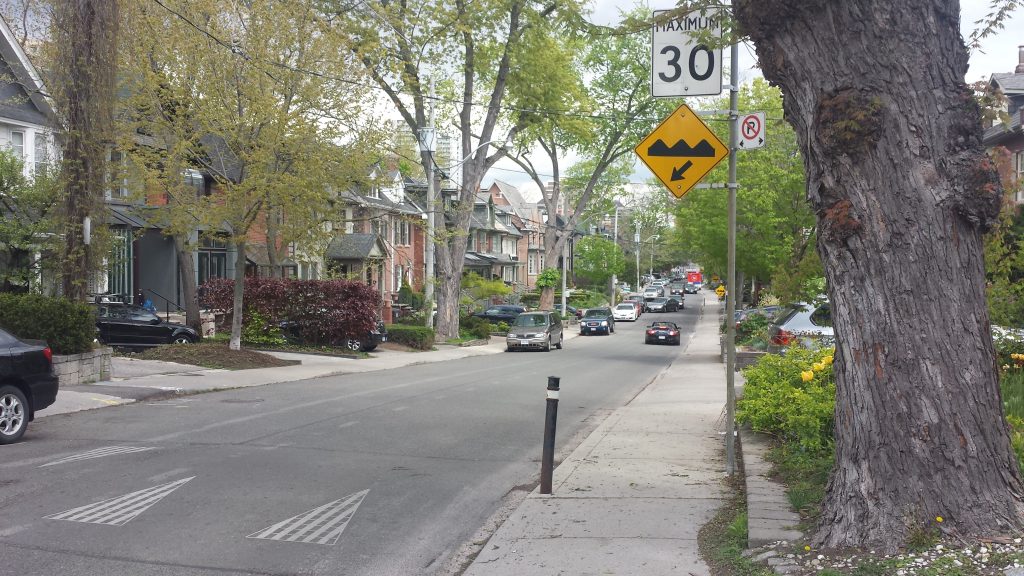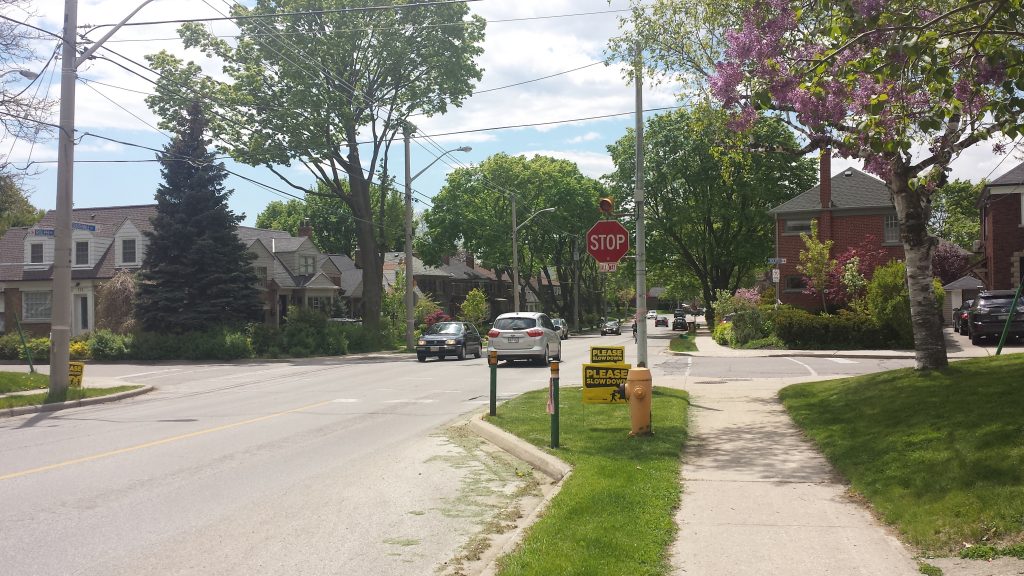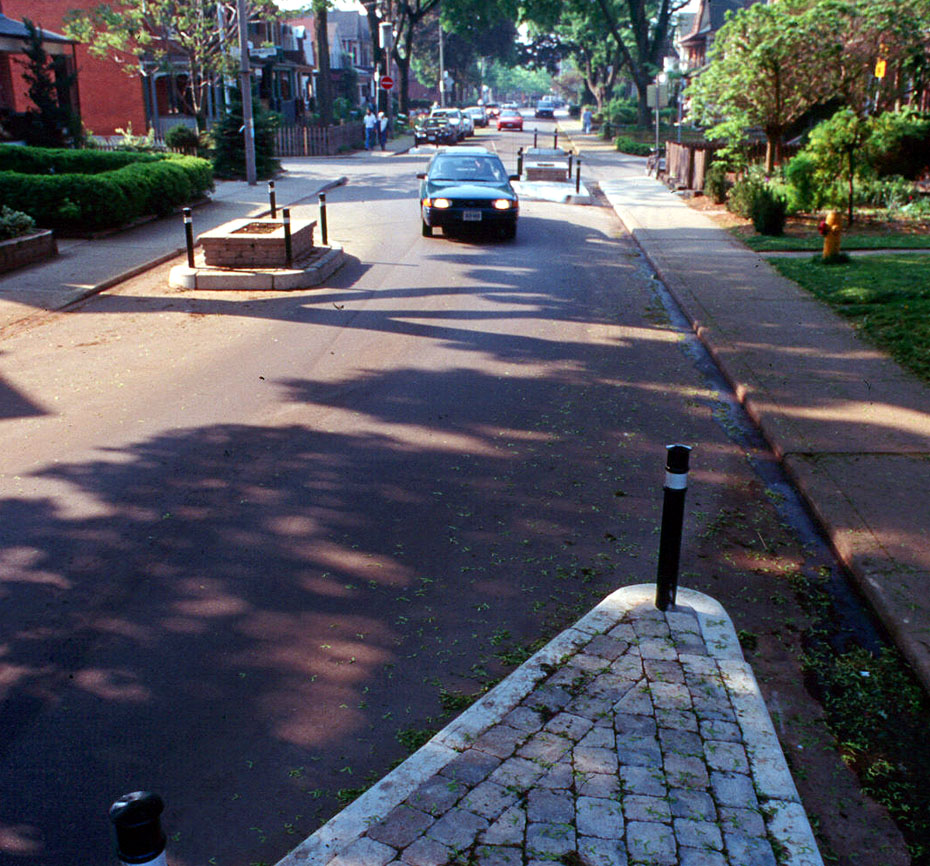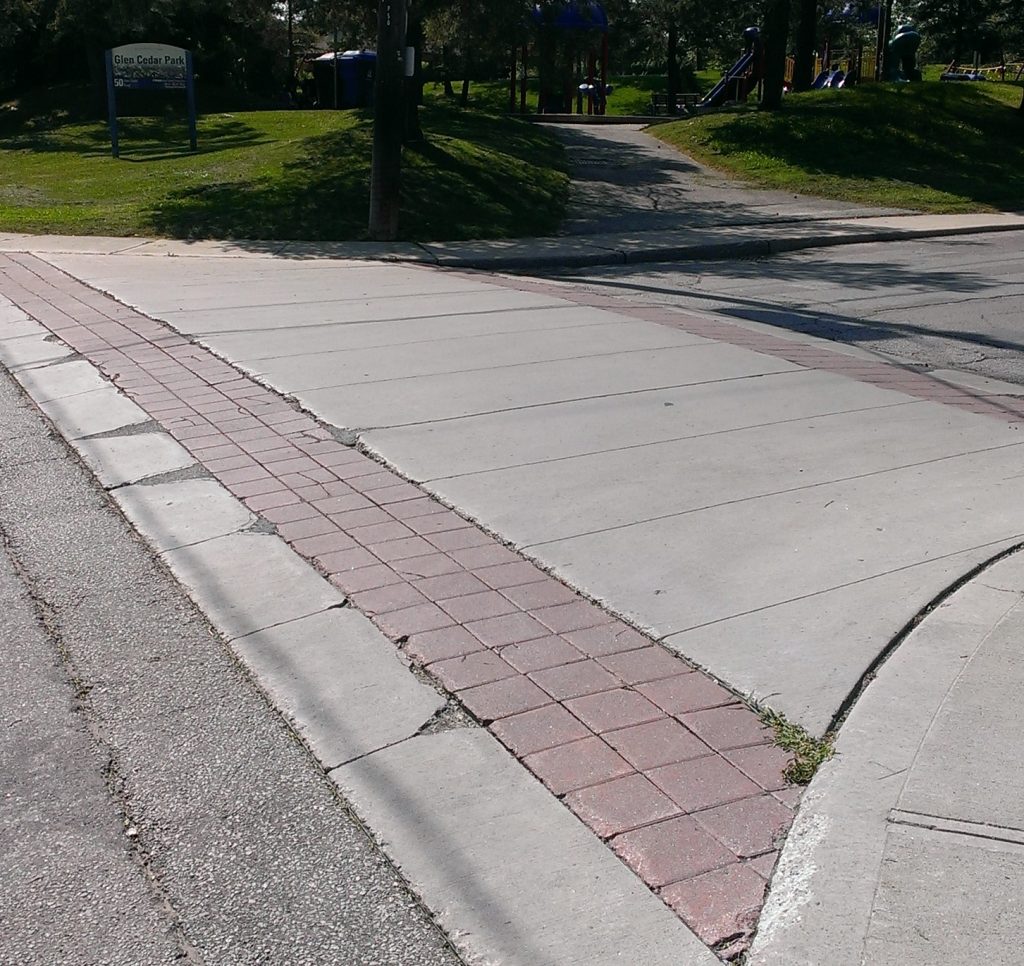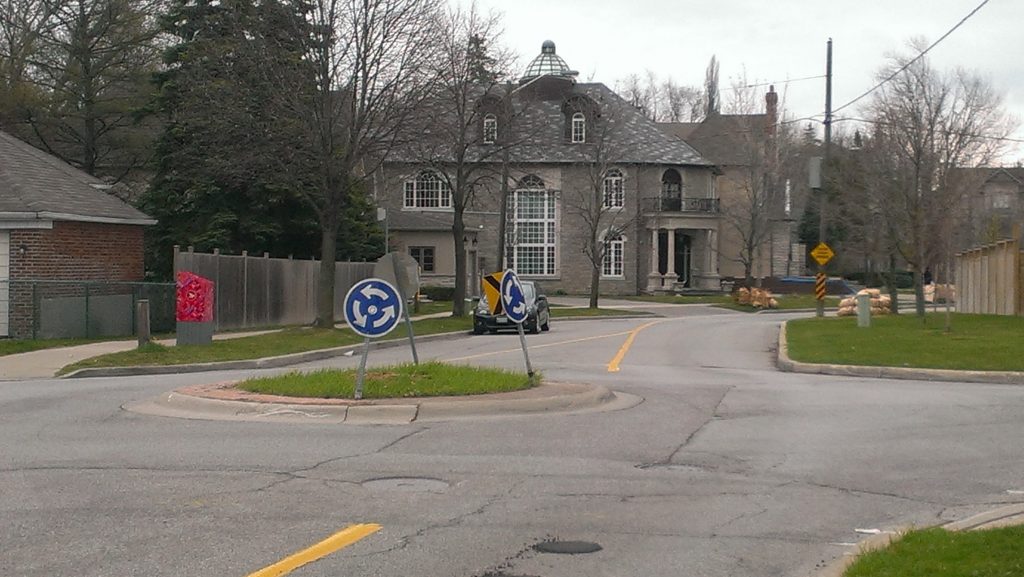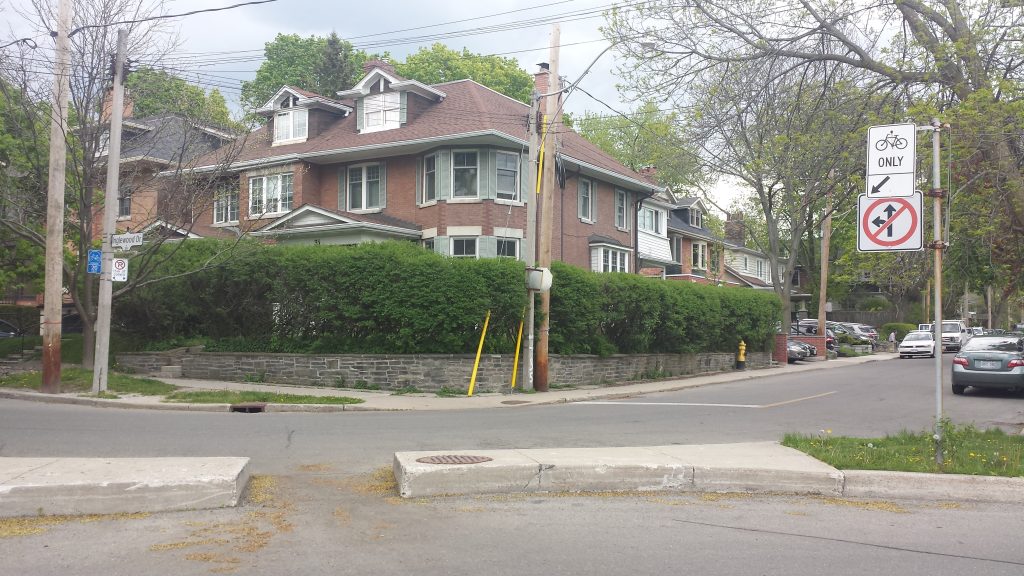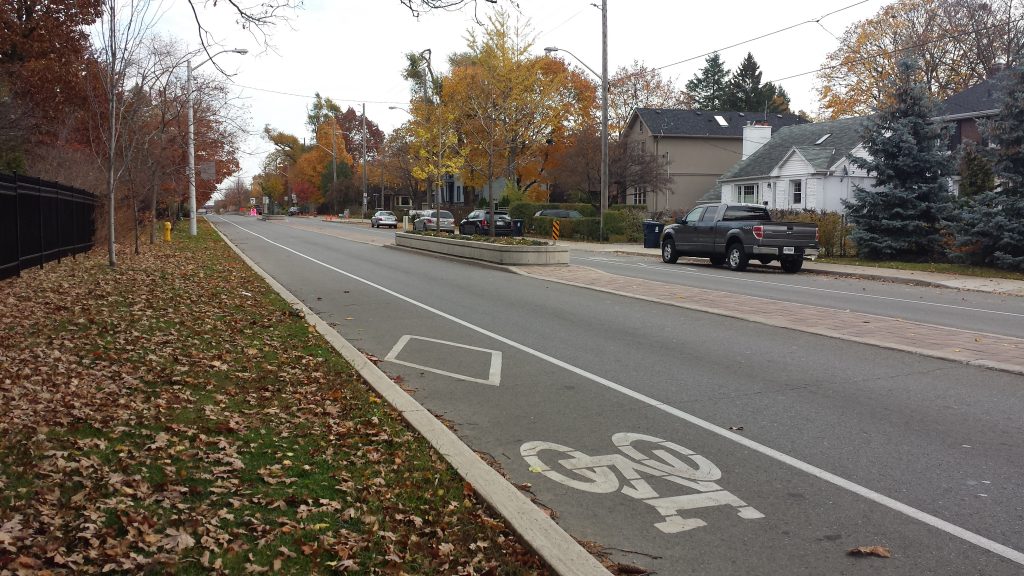Traffic calming can take a variety of forms. The most common type in Toronto are speed humps. However, there are many other types of traffic calming that may be appropriate for your street. These include traffic circles, curb extensions, or other measures.
We recommend keeping an open mind. Councillors and City staff will have experience with a number of traffic calming solutions and can advise what will work best on certain streets. Here are a few examples of specific traffic calming treatments:
Want more ideas? Check out these Other Safety Measures that also have the effect of slowing down traffic.
Guide to Safer Streets Near Schools
- Getting Started
- Potential Paths
- Speed Limit Policies
- Traffic Calming Measures
- Traditional Traffic Calming Treatments
- Other Safety Measures
- Intersections and Crossings
- Supporting Research
- Toolkit

